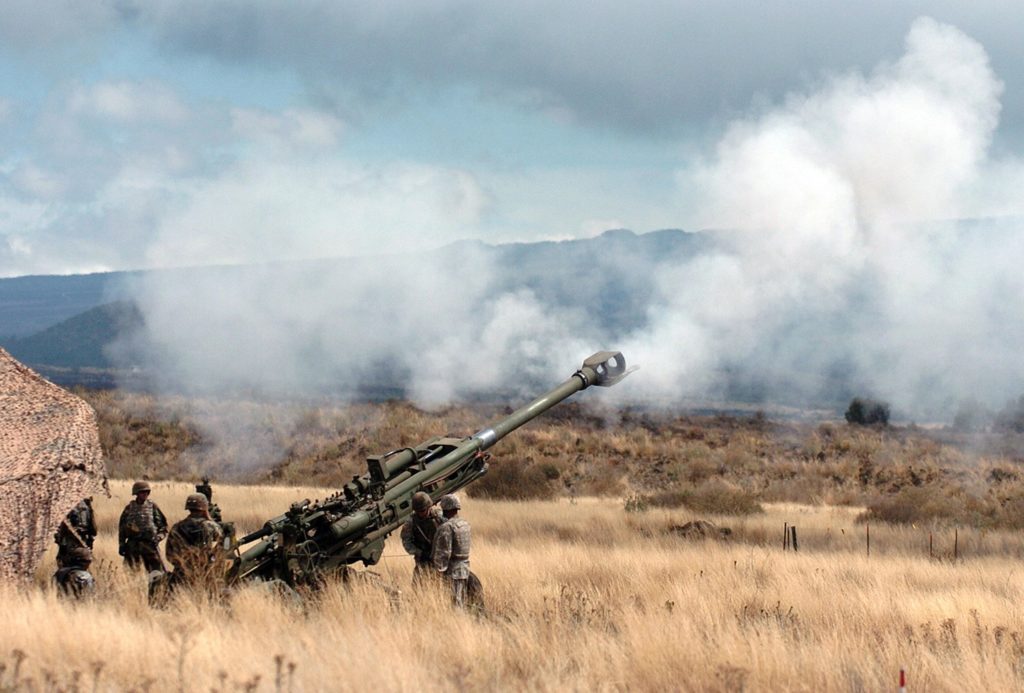
BAE Systems has signed an Undefinitized Contract Action agreement with the U.S. Army for M777 Joint Lightweight Howitzer major titanium structures. The UCA is currently limited to $50 million. This agreement allows BAE Systems to start deliveries of M777 components, while the details of the contract and its total value are being finalized. The first major structures under this UCA are reportedly scheduled for delivery in 2025.
According to BAE Systems, this agreement creates optimum conditions for a restart of M777 production in the United Kingdom. It would also present an opportunity for new and existing users to join a new M777 production initiative, taking advantage of an active production line and economies of scale. The U.S., Canada and Australia have donated M777s to Ukraine. At least eight countries currently employ the M777. BAE Systems asserts it has seen an increase in interest from across Europe, Asia, and the Americas in the M777 howitzer system.
History of the M777 program
According to Forecast International’s Ordnance & Munitions Forecast , the program began in the 1980s, when the U.S. Army and Marine Corps began investigating their common requirements for a lightweight 155mm towed howitzer. Optimized for providing fire support to rapidly deployable airborne, air assault, and light infantry units, the new artillery would combine the performance of the 155mm M198 towed howitzer with the ability to be air-transportable via sling-loading by the UH-60 Black Hawk utility helicopter. The new ordnance was also initially envisioned as replacing the 105mm L119/M119 towed howitzer in the U.S. Army’s inventory.
In December 1985, the U.S. Army awarded competitive development contracts under the 155mm Lightweight Towed Howitzer program. By the late 1980s, the 155mm Lightweight Towed Howitzer had become the Lightweight Indirect Fire Support Weapon. The program subsequently assumed the designation M777 Joint Lightweight Howitzer.
In April 1987, Vickers Shipbuilding & Engineering of the United Kingdom revived its 1982 study of the lightweight 155mm towed howitzer market with an eye toward the new U.S. Army program. Vickers briefed the U.S. Army on its proposal for the Ultralightweight Field Howitzer in 1987. The U.S. Army agreed to fully evaluate the Vickers system if Vickers funded the fabrication with its own money.
By 1989, Vickers had completed two prototypes. While one prototype remained in the United Kingdom for further trials and development, the other made its debut at the 1989 Association of the United States Army (AUSA) convention. Following the convention, the prototype underwent testing and evaluation at the Yuma (Arizona) Proving Ground. The Ultralightweight Field Howitzer completed this initial test and evaluation phase in 1990.
In October 1995, Vickers Shipbuilding & Engineering teamed with Textron Marine & Land Systems to further develop and market its Ultralightweight Field Howitzer in the United States.
The Ultralightweight Field Howitzer design makes extensive use of lightweight titanium. The piece features a low center of gravity, a hydro-pneumatic long recoil system, and four trails for stabilization. The breech assembly and loading tray are hydraulically operated. The 155mm M284 ordnance accepts a towing eye that mounts the muzzle brake of the M198 system.
The U.S. Army conducted a competitive operational evaluation of several 155mm howitzer designs in November 1996. In March 1997, the Army selected the Vickers Shipbuilding & Engineering design for full-scale engineering development. The U.S. licensee (Textron Marine & Land Systems) became the designated prime contractor for U.S. procurement. Subsequently, Royal Ordnance acquired Vickers. RO has since become the RO Defence component of BAE Systems. In 2004, Alvis Vickers and RO Defence formed the BAE Systems Land Systems division.
The full-scale engineering development contract covered 30 months. It specified the delivery of eight definitive prototypes by April 1999. The contract also included an option for procuring the initial 190 pieces. With a Milestone III full-scale production decision originally scheduled for January 2000, the original procurement objectives stood at 438 pieces for the Army and 598 pieces for the Marine Corps.
On October 1, 1998, after a series of cost overruns and technical delays, the U.S. Army dropped Textron Marine & Land Systems as the prime contractor for the M777. BAE Systems/RO Defence (formerly Vickers Shipbuilding & Engineering) became the new prime contractor for the Army program. BAE Systems / RO Defence delivered the prototype to the Army in 2000.
Meanwhile, the U.S. Army revised its procurement objective to 273 pieces; the U.S. Marine Corps also revised its procurement objective, down to 413 pieces. However, in response to the operational tempo of Operation Enduring Freedom and Operation Iraqi Freedom, the services once again reviewed their Joint Lightweight Howitzer procurement objectives.
In addition to procurement for the 82nd Airborne Division and the 101st Airborne Division (Air Assault), the Army designated the M777 as the primary towed artillery system for the Stryker Brigade Combat Teams. The SBCTs alone would require at least 126 M777 howitzers.
On April 29, 2005, the U.S. Army Armament Research, Development and Engineering Center (ARDEC) at Picatinny Arsenal (New Jersey) announced that the 155mm M777 Joint Lightweight Howitzer had completed its development phase. The initial M777 howitzers for the U.S. Marine Corps rolled out of the BAE Systems Hattiesburg (Mississippi) facility in February 2004. The M777 achieved First Unit Equipped (FUE) status in 2005 with the 3rd Battalion, 11th Marine Regiment (Twentynine Palms, California).
On March 22, 2005, the U.S. Army Tank-automotive and Armaments Command (TACOM) awarded BAE Systems a $193,899,148 firm-fixed-price production contract for the M777, as a joint U.S. Army-U.S. Marine Corps effort.
BAE Systems produced the initial 94 M777 howitzers for the Marine Corps with an optical fire control system. These low-rate initial production (LRIP) howitzers eventually incorporated the production-standard Towed Artillery Designation (TAD) fire control system of the M777A1 and M777A2 howitzer configurations.
According to U.S. Department of Defense budget request documentation, procurement of the M777-series Joint Lightweight Howitzer was completed for both the U.S. Army and Marine Corps in 2011.
Dean is responsible for Military Vehicles Forecast and Ordnance & Munitions Forecast. Prior to joining Forecast International, Dean served as an intelligence analyst in the U.S. Army for 10 years. As an Order of Battle and weapons specialist, he served in a variety of assignments, ranging from running the intelligence section of an Apache attack helicopter squadron in combat to representing a theater-level intelligence organization in a national-level interagency intelligence working group. His intelligence assignments have included duty in Japan, Korea, the Netherlands, Germany, Turkey and Iraq, as well as Fort Hood, Texas, and Norfolk, Virginia.




